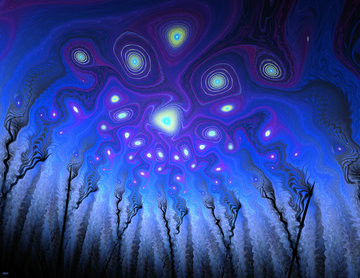With you as my therapist I finally learned to trust another human being. You helped me discover faith in the world and in myself. I didn’t think that was going to be possible. You have been a real gift in my life.

Dreaming for Both Sides of Our Brains
Welcome dreamers,
We are multi-faceted beings: logical and imaginative, made of clay and made of stardust. Warning: I am a little bit of a neuroscience geek, so the first part is a bit scientific; but I think very cool. Apparently, science has figured out why our eyes move (REM) while we are dreaming: Our brains do not discriminate between waking and sleeping realities: they think that the dream imagery is real!
A very short tour of the relevant brain structures: The left side of our brain helps us out with logic, linear thinking, and sequencing; while the right side of our brain supports our creativity, imagination, and poetry. Our dreams are most likely generated from deep within our limbic system (our emotional and non-rational brain) which straddles both halves deep inside the brain. We then remember and work on our dreams from our prefrontal cortex (our thinking and declarative memory brains): the surface area under our foreheads and right behind our eyes. In between the night dream and the day remembering, the medial temporal lobe, the part that serves as a bridge between memories and visual recognition, helps us process things that we saw and that happened to us in life. And, of course, as we dream we also create or remember worlds apart, embarking on mythic and soul-stirring journeys, make meaning out of metaphor, and weave gossamer strands of silk and stars in our nightly sojourns. This post gives equal time to both sides of our brain: a fascinating study on why our eyes move when we dream, and then a poem on the nature of a dreaming.
For your left brain’s pleasure, an article published in Nature Communications (8/15) by Peter Dockrill describes a new study by Tel Aviv University researchers Yuval Nir and Itzhak Fried. It seems that each flicker of our eyes is accompanying a new image in our dream, with the eye movement “essentially acting like a reset function between individual dream image “snapshots”. Using electrodes planted deep in patients’ brains as they were prepared for brain surgery to alleviate epileptic seizures, they found that the neural brain activity while seeing new images in a dream (or in our imaginations when awake) was essentially the same as when actually seeing new images in waking life. In other words, the brain does not distinguish between the “real” images we see and dreaming ones. No wonder they seem so real – to our dreaming brains, they are.
And now, for your right brain’s pleasure (and as a reward for getting through the neuro-science lesson): A poem by Antonio Machado (with thanks to Belle for reciting it and then sending it to me).
Last Night As I Was Sleeping,
By Antonio Machado (translated by Robert Bly)
Last night as I was sleeping,
I dreamt—marvelous error!—
that a spring was breaking
out in my heart.
I said: Along which secret aqueduct,
Oh water, are you coming to me,
water of a new life
that I have never drunk?
Last night as I was sleeping,
I dreamt—marvelous error!—
that I had a beehive
here inside my heart.
And the golden bees
were making white combs
and sweet honey
from my old failures.
Last night as I was sleeping,
I dreamt—marvelous error!—
that a fiery sun was giving
light inside my heart.
It was fiery because I felt
warmth as from a hearth,
and sun because it gave light
and brought tears to my eyes.
Last night as I slept,
I dreamt—marvelous error!—
that it was God I had
here inside my heart.
Or possibly- not an error? That word struck me as not exactly fitting in with the poem, or my sense of a dream, so I looked up the poem in the original Spanish. The word actually used for “error” is “ilusion”! Robert Bly seems to color his translation through his own psyche (as, I suppose all translators do to some extent). But “illusion” is illusion- not a mistake or error. This fits in more with the sweetness of the dream. For me, illusion gives options, choices, and does not negate, as the word “error” can do. In addition, as we learned early, the brain does not distinguish between dream images and seen waking images; so it may also be that this “illusion” Machado dreamt and wrote about is as real as the words you are reading now. I would love to hear your thoughts on this dream!
In any case, as Machado suggests: may you find in your dreams a source of refreshment and sweetness and warmth for your heart. May we live into our best dreams and have the luminous reality that our dreaming brains can hold as truth be true on both sides of the threshhold.
Sweet dreams
Linda Yael
Our life is the story we tell ourselves we are. Therapy, from the Greek “therapia”, means doing the work of the gods. The journey to healing is about doing this sacred work in the company of another.
-- Linda Schiller 2